Uploaded Image Contains More Than One Extension
Accept you ever wondered when you should employ a JPG instead of a PNG? Or possibly y'all're just trying to figure out which program opens an INDD. Unless you're a graphic designer by training (like me), chances are you've never needed to sympathize things similar what separates a TIF from a PDF or a PSD. While the big variety of epitome formats may seem overwhelming, there is a method to the madness. Nosotros've put together a useful outline to help you understand the difference between each file format, and when they are appropriate to use. Starting time things first: What is the difference between vector and raster? Raster images are constructed past a serial of pixels, or individual blocks, to grade an epitome. JPEG, GIF, and PNG are all raster image extensions. Every photograph you find online or in print is a raster epitome. Pixels have a defined proportion based on their resolution (high or low), and when the pixels are stretched to fill space they were not originally intended to fit, they get distorted, resulting in blurry or unclear images. In order to retain pixel quality, you lot cannot resize raster images without compromising their resolution. As a result, it is of import to recollect to save raster files at the verbal dimensions needed for the application. Vector images are far more flexible. They are constructed using proportional formulas rather than pixels. EPS, AI and PDF are perfect for creating graphics that require frequent resizing. Your logo and brand graphics should have been created as a vector, and you should ever have a master file on paw. The real beauty of vectors lies in their power to exist sized as modest every bit a stamp stamp, or large enough to fit on an 18-wheeler! If yous're not sure whether y'all have a vector version of your logo, here'south a trivial play a trick on for you: Call the company that printed your business cards or the vendor that embroidered your logo on a shirt. Often they'll accept a vector file of your logo that they tin send to you for your records. Accept yous heard your designer talk almost DPI or PPI? DPI stands for "dots per inch" and PPI translates to "pixels per inch." These units of mensurate are essential for determining if the density of pixels in an image is appropriate for the application you are using. The biggest thing to note when determining what DPI or PPI you require is if y'all are using an image for print or web. Websites display images at 72dpi, which is low resolution; even so images at this resolution expect really crisp on the spider web. This is not the case for print. Best practices for printing an image volition require it to be no less than 300dpi. Don't effort to pull a fast one on the system. A lot of magic tin can happen in Photoshop, just creating pixels out of sparse air isn't one of them. Pulling an image off of the web and trying to get it to fit the dimensions of your print projection simply won't work. You lot will stop upwardly with a pixelated prototype that appears stretched and distorted. JPEGs might exist the nigh common file blazon y'all come across on the web, and more than than probable the kind of image that is in your company's MS Word version of its letterhead. JPEGs are known for their "lossy" compression, meaning that the quality of the prototype decreases as the file size decreases. You can apply JPEGs for projects on the web, in Microsoft Part documents, or for projects that require printing at a high resolution. Paying attending to the resolution and file size with JPEGs is essential in lodge to produce a nice-looking projection. There is no difference between the .jpg and .jpeg filename extensions. Regardless of how y'all proper name your file, it is still the same format and will behave the same way. The only reason that the two extensions exist for the same format is because .jpeg was shortened to .jpg to accommodate the 3-character limit in early versions of Windows. While there is no such requirement today, .jpg remains the standard and default on many image software programs. PNGs are astonishing for interactive documents such as web pages but are not suitable for print. While PNGs are "lossless," meaning y'all tin can edit them and not lose quality, they are nevertheless low resolution. The reason PNGs are used in almost spider web projects is that you can save your image with more than colors on a transparent background. This makes for a much sharper, web-quality image. GIFs are nearly common in their animated form, which are all the rage on Tumblr pages and in banner ads. It seems like every twenty-four hour period we see popular civilization GIF references from Giphy in the comments of social media posts. In their more basic grade, GIFs are formed from up to 256 colors in the RGB colorspace. Due to the limited number of colors, the file size is drastically reduced. This is a common file blazon for web projects where an paradigm needs to load very chop-chop, as opposed to ane that needs to retain a higher level of quality. A TIF is a big raster file that doesn't lose quality. This file type is known for using "lossless compression," meaning the original image data is maintained regardless of how often you might copy, re-relieve, or compress the original file. Despite TIFF images' ability to recover their quality later manipulation, you should avert using this file type on the web. Since it can take forever to load, information technology'll severely touch on website functioning. TIFF files are likewise ordinarily used when saving photographs for print. PSDs are files that are created and saved in Adobe Photoshop, the nearly popular graphics editing software ever. This type of file contains "layers" that brand modifying the image much easier to handle. This is likewise the program that generates the raster file types mentioned above. The largest disadvantage to PSDs is that Photoshop works with raster images as opposed to vector images. PDFs were invented by Adobe with the goal of capturing and reviewing rich information from any application, on any computer, with anyone, anywhere. I'd say they've been pretty successful so far. If a designer saves your vector logo in PDF format, you tin view it without whatever design editing software (as long as you have downloaded the complimentary Acrobat Reader software), and they have the ability to utilize this file to brand further manipulations. This is past far the best universal tool for sharing graphics. EPS is a file in vector format that has been designed to produce high-resolution graphics for print. Almost whatsoever kind of design software can create an EPS. The EPS extension is more of a universal file type (much similar the PDF) that tin be used to open vector-based artwork in any blueprint editor, not just the more common Adobe products. This safeguards file transfers to designers that are not however utilizing Adobe products, but may be using Corel Depict or Quark. AI is, past far, the prototype format most preferred by designers and the most reliable blazon of file format for using images in all types of projects from web to print, etc. Adobe Illustrator is the manufacture standard for creating artwork from scratch and therefore more than likely the program in which your logo was originally rendered. Illustrator produces vector artwork, the easiest type of file to manipulate. Information technology tin can also create all of the aforementioned file types. Pretty cool stuff! It is past far the best tool in any designer's arsenal. INDDs (InDesign Document) are files that are created and saved in Adobe InDesign. InDesign is commonly used to create larger publications, such every bit newspapers, magazines and eBooks. Files from both Adobe Photoshop and Illustrator tin can be combined in InDesign to produce content rich designs that characteristic advanced typography, embedded graphics, page content, formatting information and other sophisticated layout-related options. A RAW image is the least-processed paradigm blazon on this list -- information technology's oft the offset format a picture inherits when it's created. When you lot snap a photograph with your photographic camera, it's saved immediately in a raw file format. Only when you upload your media to a new device and edit information technology using image software is it saved using one of the paradigm extensions explained to a higher place. RAW images are valuable because they capture every element of a photograph without processing and losing small visual details. Eventually, nevertheless, y'all'll want to package them into a raster or vector file blazon so they tin be transferred and resized for various purposes. As you tin see from the icons above, there are multiple raw paradigm files in which you tin can create images -- many of them native to certain cameras (and at that place are still dozens more formats not shown above). Here's a brief description of those four raw files above: Working with images is a lot more complicated than you'd retrieve at offset glance. Hopefully this guide has provided a better agreement of the standard file types and which are most appropriate for your project. Does this article brand you wonder which file types of your logo you have on hand? Take a wait, and if yous don't have an .EPS or .AI file stashed away, I would recommend contacting your designer. As Fine art Director at Quintain Marketing, Jessie-Lee brings a unique blend of graphic design skills and marketing and social media cognition. In addition to her pattern skills, Jessie-Lee has extensive experience in the design and implementation of social media strategies including blogging, and the use of platforms such as Facebook, Twitter, and LinkedIn. Editor's note: This mail service was originally published in October 2018 and has been updated for comprehensiveness. 
Vector vs. Raster
Raster Image Files
Vector Image Files
High Resolution vs. Low Resolution
Types of Image Files
1. JPEG (or JPG) - Joint Photographic Experts Group

JPG vs JPEG
ii. PNG - Portable Network Graphics

3. GIF - Graphics Interchange Format

4. TIFF - Tagged Image File
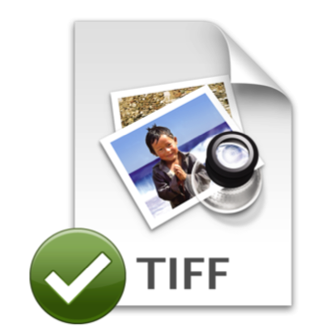
v. PSD - Photoshop Document
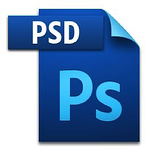
half dozen. PDF - Portable Certificate Format
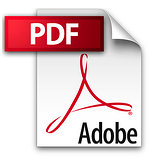
7. EPS - Encapsulated Postscript
![]()
eight. AI - Adobe Illustrator Document
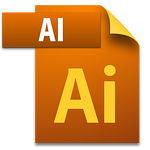
9. INDD - Adobe InDesign Document

10. RAW - Raw Image Formats
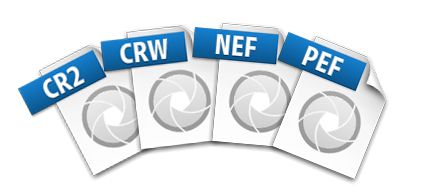


Originally published Oct twenty, 2020 7:00:00 AM, updated Apr 27 2021
whitsonmysecutage.blogspot.com
Source: https://blog.hubspot.com/insiders/different-types-of-image-files
0 Response to "Uploaded Image Contains More Than One Extension"
Publicar un comentario